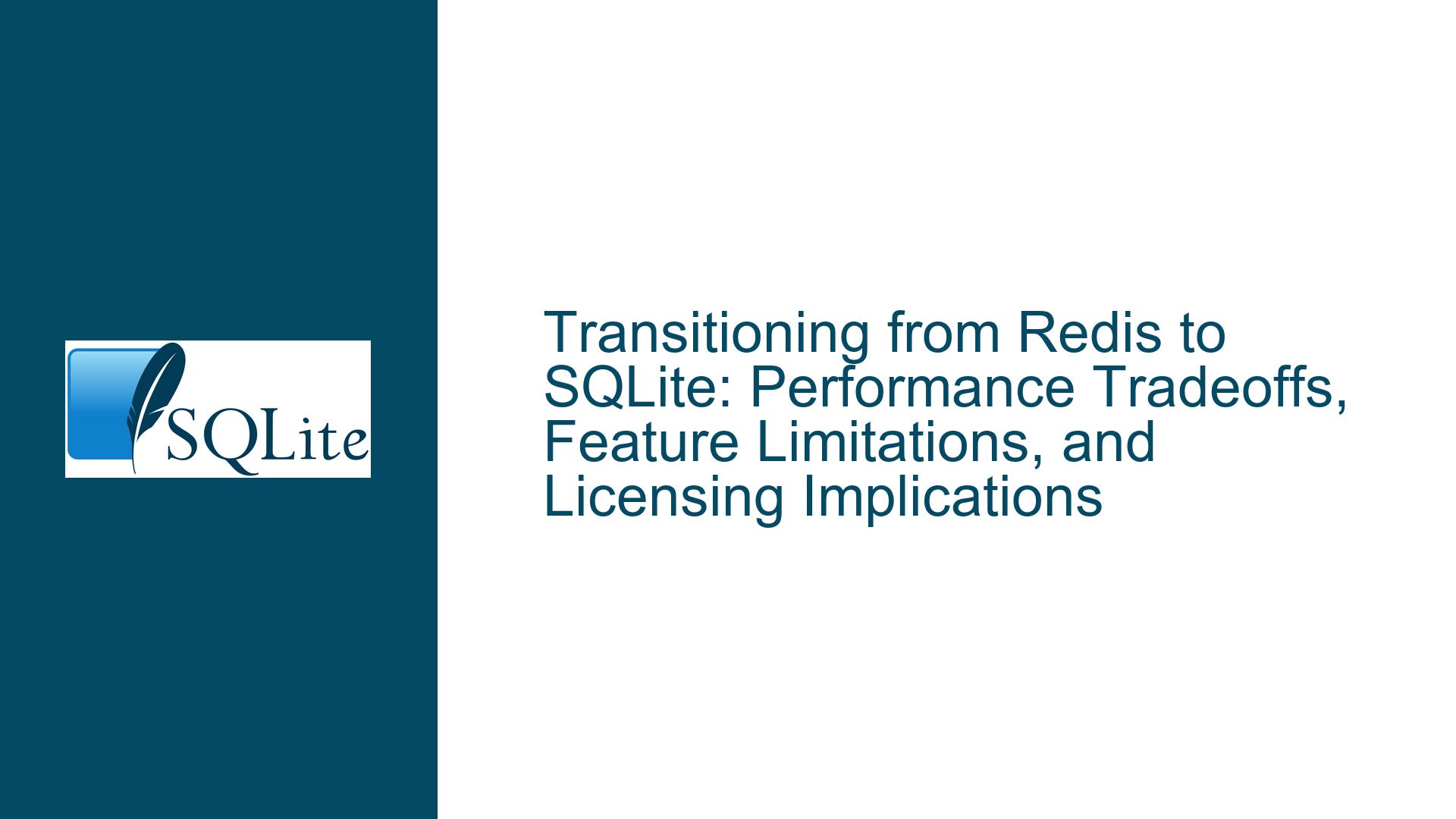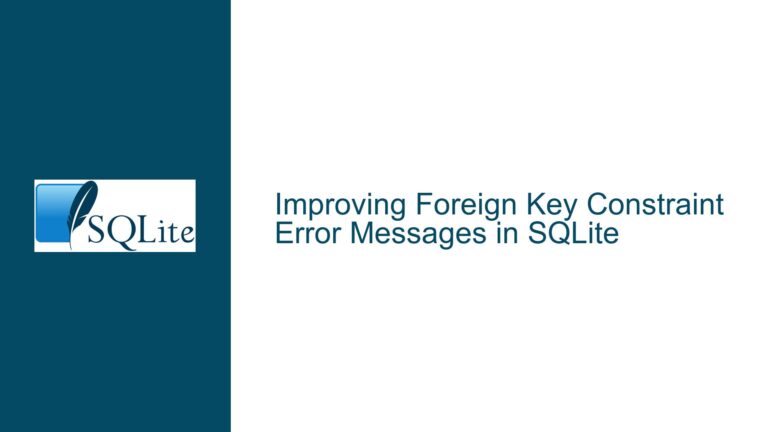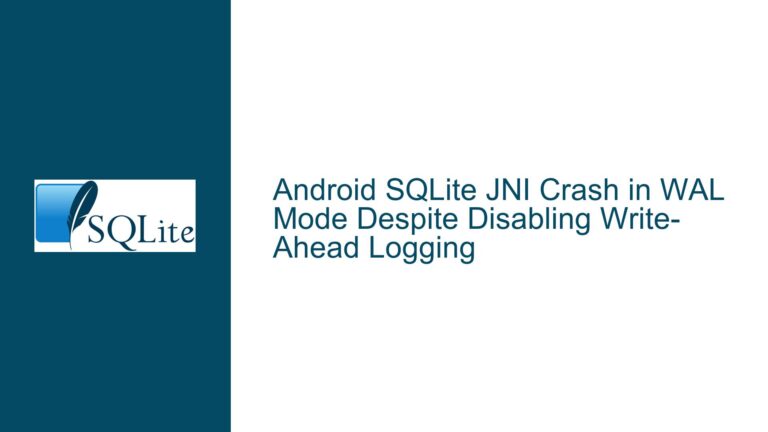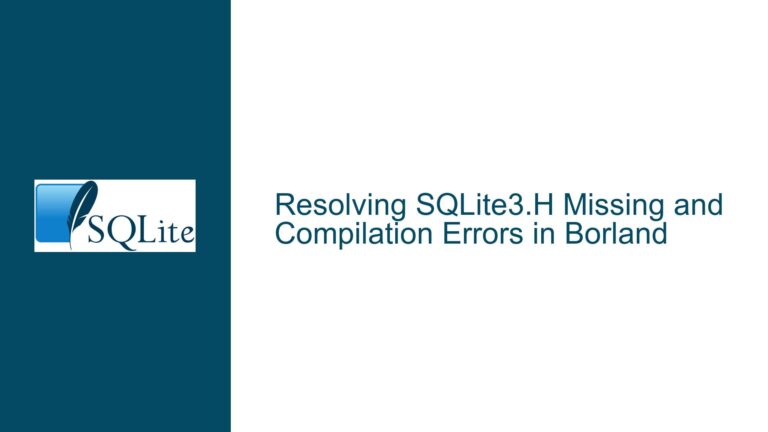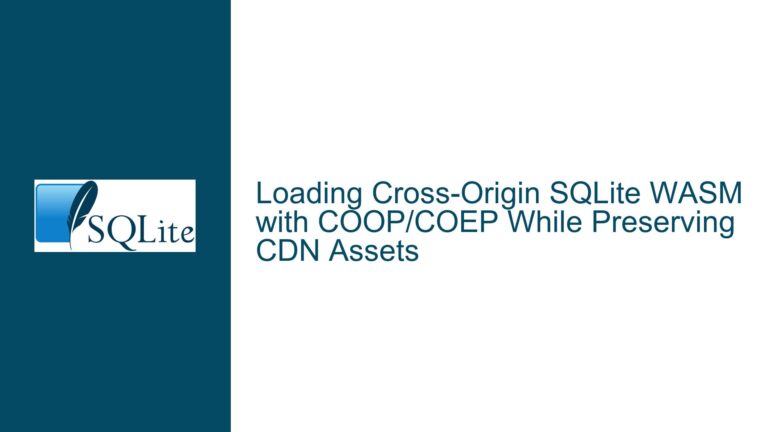Transitioning from Redis to SQLite: Performance Tradeoffs, Feature Limitations, and Licensing Implications
Architectural and Functional Disparities Between Redis and SQLite
Redis and SQLite serve fundamentally different roles in application architecture, and migrating between them introduces challenges rooted in their design philosophies. Redis operates as an in-memory data structure store optimized for ephemeral data, high-throughput operations, and real-time messaging. SQLite, while capable of in-memory operation, is a disk-based relational database engine emphasizing durability, ACID compliance, and structured data management. The core issue arises when attempting to replicate Redis-specific features—such as pub/sub messaging, automatic key expiration, and atomic operations on complex data types—within SQLite’s relational paradigm. Additionally, performance discrepancies emerge due to Redis’s reliance on RAM versus SQLite’s disk I/O dependencies, even when using :memory: mode. Licensing further complicates the transition: Redis’s source-available model restricts redistribution of modified versions, whereas SQLite’s public domain licensing offers unrestricted use but lacks built-in distributed systems support.
Key pain points include latency spikes in write-heavy workloads due to SQLite’s file locking mechanism, the absence of native TTL (time-to-live) functionality for expiring keys, and the need to reimplement Redis-specific features like sorted sets or blocking list operations using SQL triggers or application-layer logic. For example, Redis’s LPUSH/RPOP operations on lists require emulation via SQLite tables with timestamp-based polling, introducing overhead. Concurrent access patterns also diverge: Redis handles thousands of connections per second with minimal contention, while SQLite’s write-ahead logging (WAL) mode improves concurrency but cannot match the throughput of an in-memory store. Developers must also reconcile Redis’s horizontal scaling capabilities (via Redis Cluster) with SQLite’s single-writer limitation, which complicates distributed deployments.
Root Causes of Performance Degradation and Feature Gaps
The performance gap stems from architectural decisions inherent to each database. Redis’s in-memory storage eliminates disk seek times, allowing sub-millisecond response times for read/write operations. SQLite, even in :memory: mode, incurs overhead from SQL parsing, query optimization, and transaction management. For instance, a simple INCR operation in Redis translates to an atomic increment, whereas SQLite requires UPDATE table SET value = value + 1 WHERE key = ?, which involves index traversal, row locking, and WAL synchronization. Write amplification becomes significant in SQLite when handling frequent small transactions, as each commit flushes data to disk (unless using PRAGMA synchronous = OFF, which risks data loss).
Feature limitations arise from SQLite’s relational model. Redis’s pub/sub system, which allows decoupled communication between services, lacks a direct equivalent in SQLite. Emulating this would require a polling mechanism where subscribers repeatedly query a messages table for new entries—a resource-intensive process. Similarly, Redis’s EXPIRE command, which automatically deletes keys after a specified duration, necessitates cron jobs or trigger-based cleanup in SQLite, increasing complexity. Data type mismatches further complicate migrations: Redis’s HyperLogLog structures for probabilistic cardinality estimation cannot be natively replicated in SQLite without custom extensions.
Licensing considerations add another layer. Redis’s transition to the Redis Source Available License (RSAL) restricts cloud providers from offering managed Redis services, pushing some users toward SQLite. However, SQLite’s lack of network transparency forces applications to handle data sharing via file system mounts or third-party tools like LiteFS, which introduces operational complexity. Security models also differ: Redis supports role-based access control (RBAC), while SQLite relies on file system permissions, limiting granularity in multi-tenant environments.
Mitigating Limitations and Optimizing SQLite for Redis-Like Workloads
To address performance bottlenecks, reconfigure SQLite for low-latency operations. Enable WAL mode (PRAGMA journal_mode = WAL;) to allow concurrent reads and writes, reducing contention. Adjust the synchronous pragma to NORMAL for a balance between speed and durability, or OFF for volatile caches. For in-memory workloads, attach a RAM disk to store the database file, bypassing disk I/O entirely. Use prepared statements to minimize SQL parsing overhead and employ UPSERT patterns (INSERT ... ON CONFLICT DO UPDATE) for atomic operations.
Replicating Redis features requires schema redesign. Implement TTL by adding an expires_at column and a recurring job that deletes expired rows using DELETE FROM table WHERE expires_at <= strftime('%s','now'). For pub/sub, create a messages table with an auto-incrementing ID and have subscribers track their last seen ID, polling with SELECT * FROM messages WHERE id > ? LIMIT 100. To approximate sorted sets, use a compound index on (score, member) and window functions for ranking:
CREATE TABLE leaderboard (
member TEXT PRIMARY KEY,
score INTEGER
);
SELECT member, score, RANK() OVER (ORDER BY score DESC) AS rank
FROM leaderboard
WHERE member = ?;
For clustering, use LiteFS to replicate SQLite databases across nodes, though this introduces eventual consistency. To handle high write throughput, partition data into multiple SQLite files (e.g., sharding by user ID) and distribute load across them.
Benchmark rigorously using tools like redis-benchmark and custom scripts to compare throughput for SET/GET operations, concurrent connections, and latency under load. Monitor SQLite’s performance using sqlite3_analyzer and EXPLAIN QUERY PLAN to optimize indexes. If Redis-specific features remain irreplaceable, consider hybrid architectures: offload pub/sub to Redis while using SQLite for persistent storage, leveraging SQLite’s redis virtual table extension for proxying commands.
Finally, validate licensing compliance: ensure that SQLite’s public domain status aligns with redistribution requirements, and audit dependencies for copyleft contamination. If network transparency is critical, deploy SQLite behind a REST API with HTTP/2 multiplexing to mitigate connection limitations.
